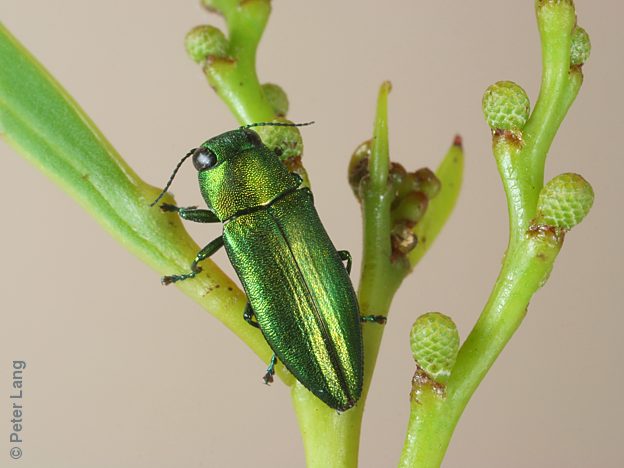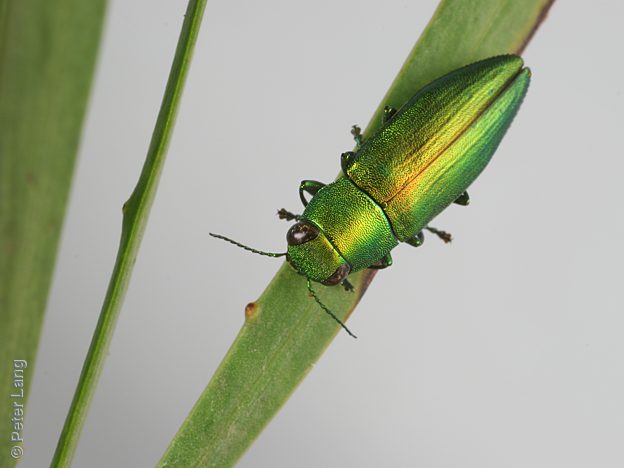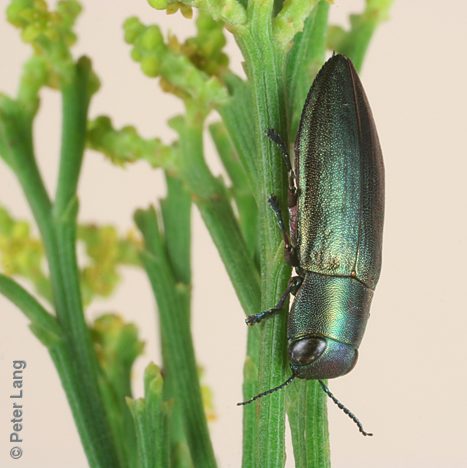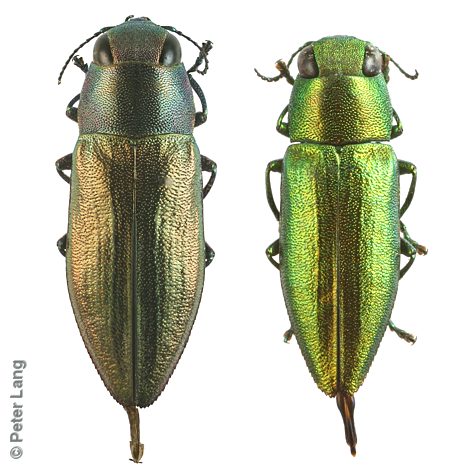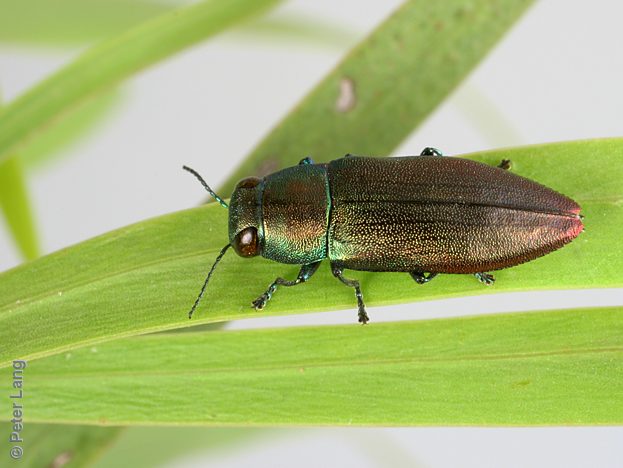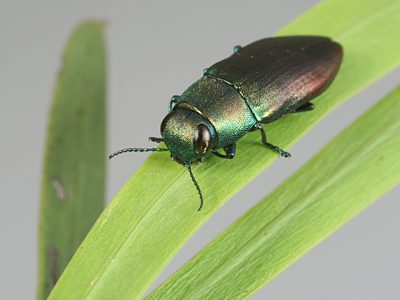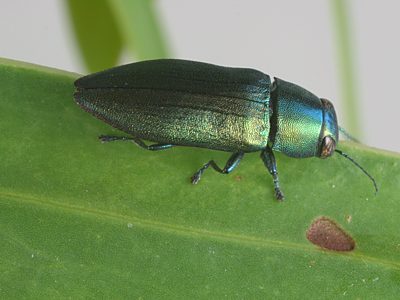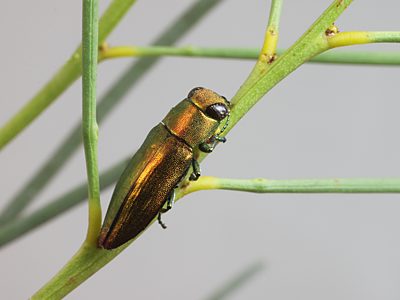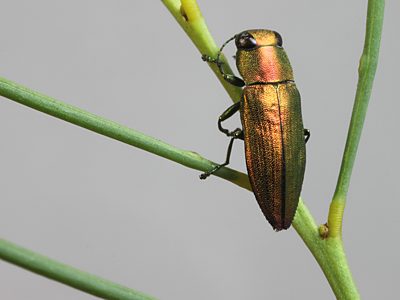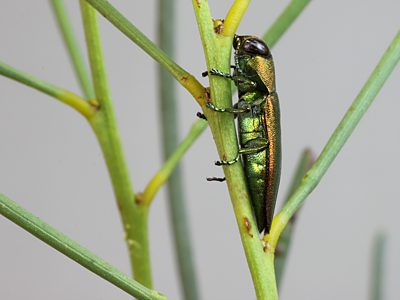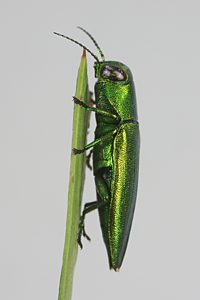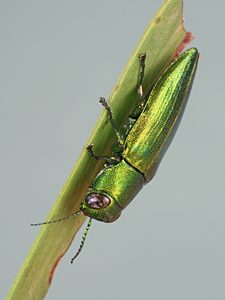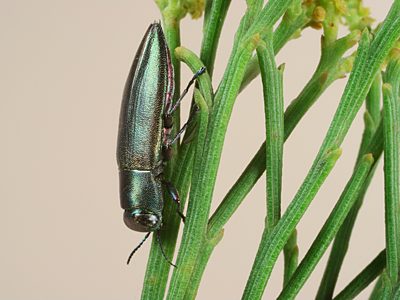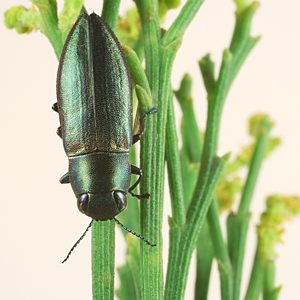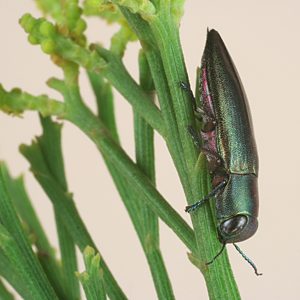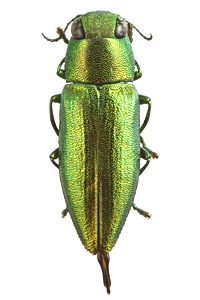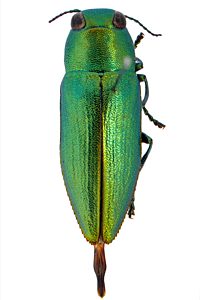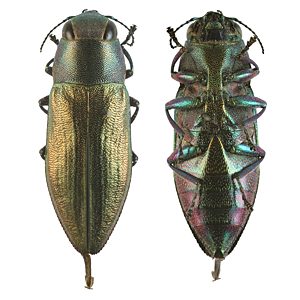Males bright metallic green to golden green (or coppery, especially in some Flinders Ranges specimens); females more subdued blue-grey green to grey-bronze, sometimes with purplish tints; mostly lacking hairs dorsally and ventrally; generally with a dense and even distribution of small punctures. Elytra without distinct costae.
This species was described by Germar 1848 (as Buprestis simplex) based on a type collection from Adelaide. It is still common on foliage of Golden Wattle Acacia pycnantha in the Adelaide area. This is a leaf-eating species found on that host plus a few other Acacia species in the more temperate areas of the Mt Lofty Ranges through to the central Flinders Ranges. Records from EP and MU Regions are confined to the western margin of the southern Flinders Ranges and the eastern margin of the Mt Lofty Ranges respectively.
Melobasis simplex often occurs together with a similarly proportioned bronze-coloured species, M. sordida, which Carter 1929 had placed in synonymy under it. Melobasis sordida, however, is clearly a distinct species and was assigned to a different species group by Levey 2018.
As defined here M. simplex also excludes M. semisuturalis Blackburn, 1887 which is a member of the M. purpurascens species group.
| Legend | records | count of breeding adults, pupae and larvae |
| sites | count of major sites (unique 10 km grid cells +/- some distinct approximate localities) |
| adult | live = extracted alive; dead = extracted dead as intact or fragmentary remains; ex billet = reared and emerged from stored sections of host; ex pupa = reared from sampled pupa |
| pupa | extracted pupa; pupa ex larva = reared pupa from larva |
| larva | extracted larva (any stage including prepupa) |
| gall (only) | hatched or unhatched gall identified by form and position rather than contents |
| Plant names in green are hyperlinked to a matching host species page with plant photos. |
Adults are found mostly on the foliage of a number of Acacia species and only rarely on other genera. I have reared adults from billets cut from the dead stems of two common adult host species: Golden Wattle (Acacia pycnantha), and Wirilda (A. retinodes).
| ¹ Legend | regions | SA State Herbarium regions (map)
EA: Eastern, EP: Eyre Peninsula, FR: Flinders Ranges, GT: Gairdner-Torrens, KI: Kangaroo Island, LE: Lake Eyre, MU: Murray, NL: Northern Lofty, NU: Nullarbor, NW: North-Western, SE: South-Eastern, SL: Southern Lofty, YP: Yorke Peninsula |
| size | The ellipse is the correct size when printed, indicative on a desktop screen, and likely to be wrong on a mobile device. |
